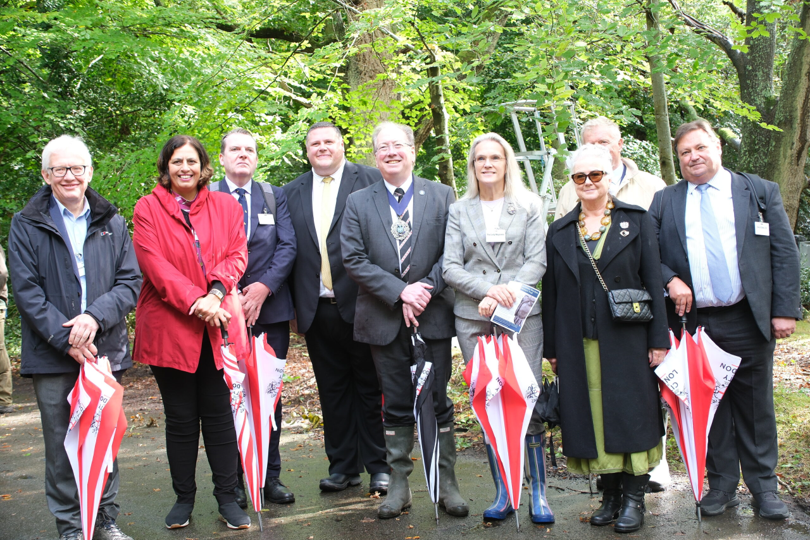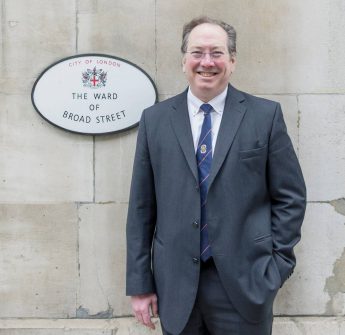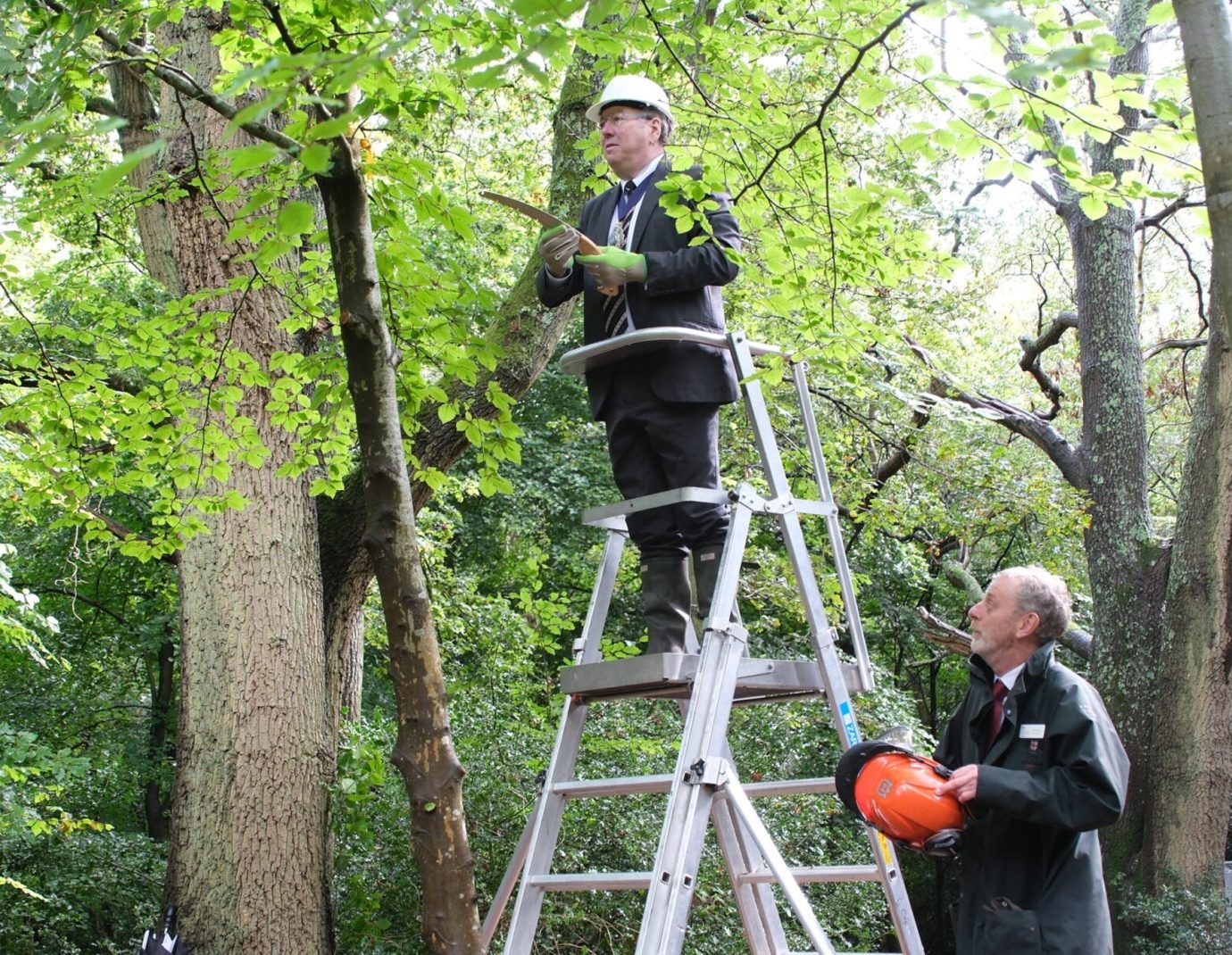Burnham Beeches comprises 220 hectares (540 acres) of ancient woodland, heath, wood pasture and wetland. It is a Special Area of Conservation, a Site of Special Scientific Interest and a National Nature Reserve. Since 1879, it has been owned and maintained by the City of London Corporation as part of its portfolio of 11,000 acres of open spaces retained for public recreation and enjoyment across four counties in England. It welcomes over 600,000 visitors each year and its natural capital valued at £3.6m annually in public benefits. It operates as a registered charity, overseen by the City’s Epping Forest and Commons Committee.
My remarks are in three parts:
Burnham Beeches Coffee Colloquy
“Space for Nature”, The Beeches Cafe, Thursday 26 September
by The Rt Hon The Lord Mayor of London, Alderman Professor Michael Mainelli
KEY MESSAGES:
• To live sustainably with other forms of life we need to handover large chunks of our planet to nature
• Economics is vital in achieving this aim – reserves, corridors, set-asides, land value capture etc.
Ladies and gentlemen, good morning.
Gems are priceless. Indeed – “A diamond has scarce any value in use; but a very great quantity of other goods may frequently be had in exchange for it.” On the contrary, nature is worthless. “Nothing is more useful than water: but it will purchase scarce anything; scarce anything can be had in exchange for it.” That was Adam Smith over two centuries ago.
Reasonable estimates for the optimal sustainable global population – which themselves are anthropocentric – sit at somewhere between 1.5 and 2 billion people. Our current global population is now just above 8 billion people and we are already believed to have exceeded six of the nine planetary boundaries identified as keeping earth habitable. In other words, we are drawing upon earth’s resources on credit, using more planet than exists – let alone making room for other species.
Worse still, the UN estimates that the global population will peak in the year 2084 at 10.3 billion people, before decreasing significantly from there. Interventions to expedite that process are unconscionable, but it’s clear we need to handover large chunks of our planet to nature if we are to live sustainably.
The only way to support biodiversity is the protection of raw land and sea through reserves, corridors, and hard set-asides. Drawing on my experience helping to develop the Marine Stewardship Council, I know that reserves and sanctuaries work in giving diverse species a habitat. Corridors are for roaming species, and as the work of IFAW in southern Africa and India demonstrates, elephant corridors work for large, intelligent, social, migratory animals.
Hard set-asides and land value capture, which seeks to ensure the fair distribution of increases in the value of privately-owned land between landowners, the local community, and government, can also help. Want to build a new golf course? Go for it – but put two new golf courses worth of land into set-aside.
If you want to see land value capture in action, and at the same time shatter a common misconception, I challenge you to search London and Hong Kong on Google Maps. You’ll see the M25 equivalent. You’ll see the swathe of greenery that surrounds one metropolis but not the other. And you’ll see the surrounding sea. But trying guessing which is greener.
Spoiler alert – despite our “green belt”, it’s Hong Kong, not London. Why? Because Hong Kong uses land value capture in the form of a land value tax, encouraging the more creative use of brownfield land and disincentivising urban sprawl.
So the question is, do we as society want to enforce carbon prices and hard set-asides with steep payments? Or do we just like the paperwork of ESG?
By combining the abundant talent of the science and tech communities with the unrivalled financial nous of the City’s business community, we stand the best chance of enacting meaningful change.
Let’s be optimistic. Pessimism is for better times.
Then “we went a’pollarding” and an address from a tree:
Burnham Beeches Pollarding
Ladies and Gentlemen, it is my great pleasure to join you all this morning.
As the 695th Lord Mayor one has to treasure our 716.80 urban acres. And while there are many items associated with the office of Lord Mayor, the tricorn hat, the ermine robe, the key under that hat, today I’m made happy with a pruning saw!
I am delighted to be the latest in a long line of Lord Mayors to take part in this pollarding tradition here at beautiful Burnham Beeches. Our care for over 11,000 acres of open space in London and the South East is a fundamental aspect of the City of London Corporation’s historic responsibilities, removing an incredible 16,000 tonnes of carbon from the atmosphere every year. We treasure the 540 acres of Burnham Beeches and the 215 acres of Dorneywood, equal to our urban realm.
None of that would be possible without the support of not just our fantastic Natural Environment staff, but our wonderful volunteers too. During the past year a whopping 5,769 hours of voluntary work have been recorded here at Burnham Beeches – from the regular Thursday and weekend practical work sessions, which includes assistance from students of Berkshire College of Agriculture, to corporate volunteering groups, ecology, air quality, and hydrology monitoring, admin support volunteers, and even livestock lookers! Crucially, over the coming months volunteers will also be providing some much-needed oversight of my…how shall I say it…handiwork this morning, so a personal thank you from me for helping to maintain this Lord Mayor’s legacy!
There’s a beautiful proverb, variously attributed, that says: “The true meaning of life is to plant trees under whose shade you do not expect to sit.” In other words, the giving of time, resource, and effort not for gain, but for the benefit of others.
Through the dedication and commitment of all the volunteers here and not able to join us today, the future of this special place is secured. On behalf of the entire City of London Corporation, thank you.
… and then we had lunch at Dorneywood
Chairman, Chief Commoner, Honoured Guests…
It is wonderful to be here this afternoon at beautiful Dorneywood, swapping the bustle of the City for the greenery and calm of Buckinghamshire. Indeed, given I’m now an amateur arborist that can somewhat confidently pollard, you could say the Lady Mayoress and I have this morning branched out from our usual Mansion House routine.
Don’t worry, I’ll lay off the sappy puns for the rest of these remarks…
My thanks to the Chairman for your kind words, to the whole of the Epping Forest and Commons Committee for your work as custodians of Burnham Beeches and other open spaces in and around London, and to the Dorneywood Trust for allowing me to exercise the ancient Mayoral privilege of lunching here with you all today – a fabulous way to round off our tour.
As we found out when conducting research for these remarks, anyone wishing to wax lyrical about the rich diversity of species found at Burnham Beeches faces a challenge feared by every public speaker: tongue twisters. According to its official listing on the Joint Nature Conservation Committee’s website, Burnham Beeches is an exemplar Atlantic acidophilous beech forest and one of the UK’s richest sites for saproxylic invertebrates, with nationally important epiphytic communities, including the moss “Zygodon forsteri”. Try saying that after a few drinks!
While earlier today I touched briefly on the critical importance of the 11,000 acres of open spaces the City Corporation manages, I don’t need to tell you – the real experts in arboriculture – the immeasurable value of places like Burnham Beeches. Suffice to say, when Lord Courtauld-Thomson with great foresight gifted Dorneywood to the nation, in part motivated by his desire to protect Burnham Beeches as a place to be enjoyed by all, he didn’t quite imagine its equal importance in helping us meet the twin challenges of climate change and biodiversity loss.
Many of you will have heard me speak over the last year about my mayoral theme – Connect to Prosper – through which we’re celebrating the many different areas of expertise within our City – what I like to call the Knowledge Miles of our Square Mile…or perhaps more accurately today, the Green Miles of our Square Mile…promoting the City of London as the world’s coffee house: a place where people come together, from across the globe, to find solutions to our planet’s biggest challenges, not least climate change.
One of those challenges is protecting our pollinators, which is why pollinating London Together, a collaboration between the City of London’s livery companies and other organisations, is creating biodiversity corridors for pollinators across the City.
We’ve also been looking to address other challenges through a programme of experiments – from a microplastics coastal survey to testing traffic vibrations at The Monument, a 100-strong lecture series, and 25 expert networking sessions, similar to this morning’s, which are invigorating discussion around the UN Sustainable Development Goals. As part of Connect to Prosper we’ve launched six exciting initiatives:
- The Ethical AI Initiative, using ISO standards.
- The Smart Economy Networks Initiative, using international X-Road standards.
- The Constructing Science Initiative, for life science laboratories.
- GALENOS, accelerating global mental health research.
- The Green Finance Initiative, reinforcing carbon markets.
- And the Space Protection Initiative, using space debris removal insurance bonds to keep space “clutter free” – vital as 40% of the UN’s Sustainable Development Goals use earth observation and global navigation satellite systems.
Amongst Dorneywood’s impressive art collection is an oil painting by Sir Winston Churchill, so allow me to borrow his words: “We make a living by what we get, but we make a life by what we give.”
Our green spaces like Burnham Beeches give us so much, enriching our lives, restoring the environment, and providing habitats for the wildlife we share our planet with. By coming together to leverage the multi-disciplinary networks found across our broad and diverse City family, of which our green spaces and those who care for them are such an integral component, we can ensure they continue to give for many more years to come.
Now, please join me in a toast to – “The Guests”.

[For more details]

